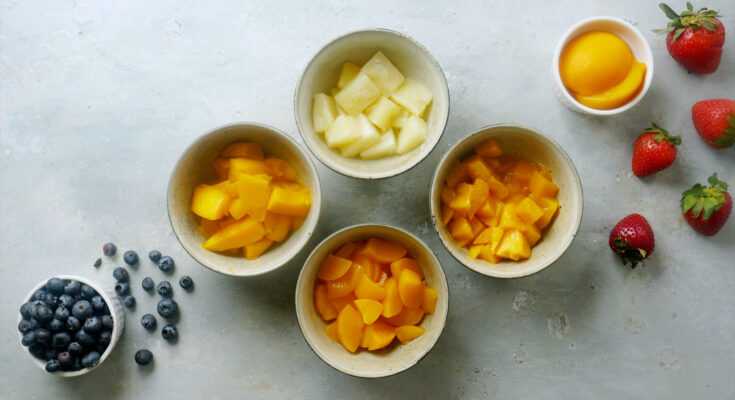Creating a beautiful and functional outdoor space involves carefully selecting plants that contribute to the overall aesthetic while providing practical benefits. Fruit-bearing trees offer a unique opportunity to enhance your landscape with their visual appeal, seasonal changes, and the delicious rewards of homegrown fruit. In this article, we explore the art of fruit tree landscaping, guiding you through the process of incorporating these trees into your outdoor environment. Discover how fruit trees can transform your landscape into a fruitful oasis that delights the senses and nourishes both body and soul.
Selecting the Right Fruit Trees
When choosing fruit trees for your landscape, consider factors such as climate, available space, and personal preferences. Research suitable fruit tree varieties that thrive in your region, ensuring they can withstand the local climate and soil conditions. Assess the amount of sunlight your landscape receives throughout the day, as most fruit trees require full sun exposure for optimal growth and fruit production.
ChrisBowers emphasizes the need to consider the size of your space and select fruit trees that fit well within the landscape. Dwarf or semi-dwarf varieties are excellent choices for smaller gardens or limited spaces, as they offer a manageable size while still providing abundant fruit. If you have ample space, standard-sized fruit trees can become striking focal points and contribute to a sense of grandeur in your landscape.
In addition to considering practical factors, think about the desired aesthetics of your landscape. Choose fruit tree varieties that align with your vision. For example, if you prefer a romantic garden, flowering fruit trees such as cherry or plum trees can create a dreamy atmosphere with their delicate blossoms. If you envision a more tropical or exotic setting, consider citrus trees with their glossy evergreen leaves and vibrant fruits.
Designing with Fruit Trees
Incorporating fruit trees into your landscape design requires thoughtful planning to ensure visual harmony and functional beauty. Take into account the overall design and theme of your outdoor area. If you prefer a formal garden, trained fruit trees such as espaliers or cordons can be pruned and shaped to create structured and elegant lines along walls or fences. Espaliers are trained to grow horizontally in a fan shape or along a trellis, while cordons are trained to grow vertically with a single stem.
For a more natural or rustic setting, allow fruit trees to grow in their natural form, adding an organic and picturesque element to the landscape. Fruit trees with a more relaxed growth habit, such as apple or pear trees, can blend seamlessly with surrounding plants and create a charming, cottage-like ambiance.
Strategic placement of fruit trees can create focal points and visual interest. Plant them as centerpieces within a lawn or garden bed, or line them along pathways to create a delightful journey through your landscape. Integrate fruit trees into mixed planting beds, pairing them with complementary flowers, shrubs, or ornamental grasses to create a vibrant and dynamic composition. Consider using taller fruit trees as background plants to provide height and structure, while shorter varieties can be used in the foreground to add layers and texture.
Maximizing Seasonal Interest
Fruit trees offer seasonal interest throughout the year, making them valuable additions to your landscape. In spring, enjoy the exquisite beauty of delicate blossoms that cover the branches, creating a stunning display of colors and fragrances. Apple, cherry, peach, and pear trees are just a few examples of fruit trees that showcase captivating blooms. Choose varieties with different bloom times to extend the flowering season and create a continuous show of floral beauty.
As the seasons progress, witness the transformation of flowers into luscious fruits. The vibrant colors of ripe apples, pears, plums, or peaches can add a touch of vibrancy and texture to your landscape. Consider the different fruit varieties and their ripening times to ensure a continuous harvest and visual interest. For example, select early, mid, and late-season apple varieties to enjoy a steady supply of fresh apples throughout the season.
During the fall, many fruit tree leaves turn brilliant shades of yellow, orange, and red, creating a spectacular autumnal display. This adds depth and warmth to your landscape, complementing the changing hues of the surrounding plants and foliage. Pair fruit trees with other deciduous trees, such as maples or birches, to create a symphony of fall colors that mesmerizes the eye.
Practical Benefits
In addition to their visual appeal, fruit trees offer practical benefits that enhance your outdoor experience. Enjoy the convenience of having fresh and organic fruits readily available in your own backyard. Harvesting ripe fruits straight from the tree allows you to experience their exceptional flavors at their peak. Imagine plucking a juicy apple or biting into a sun-warmed peach that you grew with your own hands.
Fruit trees also provide shade, creating cool and inviting spaces in your garden. This shade can be especially beneficial for outdoor seating areas or as protection for delicate plants that thrive in partial shade. The lush foliage of fruit trees can also act as a natural privacy screen, shielding your garden from prying eyes or neighboring structures. Imagine sitting beneath the canopy of a fruit tree, savoring the tranquility and privacy it provides.
Conclusion
Fruit tree landscaping is a delightful way to create a captivating and fruitful outdoor environment. By carefully selecting the right fruit tree varieties, designing with intention, maximizing seasonal interest, and enjoying the practical benefits, you can transform your landscape into a vibrant and abundant oasis. Embrace the beauty, flavors, and functionality that fruit trees bring to your outdoor aesthetic. With a well-planned fruit tree landscape, you can enjoy the best of both worlds—a stunning and bountiful garden that nourishes your senses and provides an abundant harvest for years to come. So, embrace the magic of fruit tree landscaping and watch your outdoor space flourish with the beauty and bounty of nature’s offerings.




